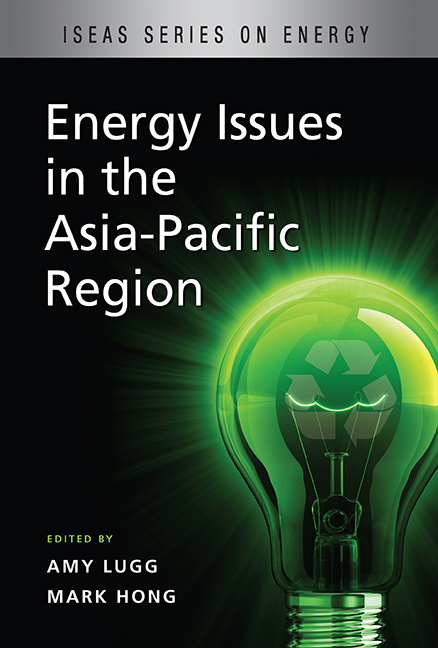Preface
Published online by Cambridge University Press: 21 October 2015
Summary
This book is volume two of the ISEAS Energy Perspectives on the Region. It comprises papers based on the seminars delivered by speakers at the ISEAS Energy Forum as well as invited contributions from various experts on energy issues. This book serves to educate the general public on energy issues as well as to raise awareness in Singapore and the wider region about energy issues — both aims of the ISEAS Energy Forum.
The range of topics is wide in scope as well as touching on a number of countries, such as the United States, Japan, China, India, and Southeast Asia. It is also timely as some papers discuss the Spratlys, renewable energy, nuclear energy, and biofuels such as Jatropha. They are written by eminent experts who have kindly and graciously agreed to share their knowledge with the public. In an interesting departure, some papers are written by senior executives from the private sector who make their case for biofuels, solar energy, electric vehicles, and nuclear energy.
Energy issues continue to remain important to the world at large, intimately linked as they are to climate change and the environment, as well as to sustainable economic development. The price of oil has now crept inexorably upwards as the world economy slowly stabilizes and resumes growth from the global recession of 2008–09. Without adequate investments in new oil and gas resources, the price of energy in 2010 can be expected to rise in step with the global economic recovery. Thus continuous attention and effort must be paid to issues such as energy efficiency and conservation. Both the United States and Singapore, as well as other countries, have in 2009 launched sustainable development programmes, emphasizing green or clean technology and energy efficiency.
We hope this volume will help to inform readers about topical energy issues that remain high on the international agenda.
- Type
- Chapter
- Information
- Energy Issues in the Asia-Pacific Region , pp. ix - xPublisher: ISEAS–Yusof Ishak InstitutePrint publication year: 2010

